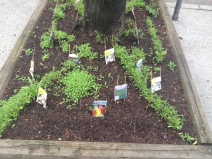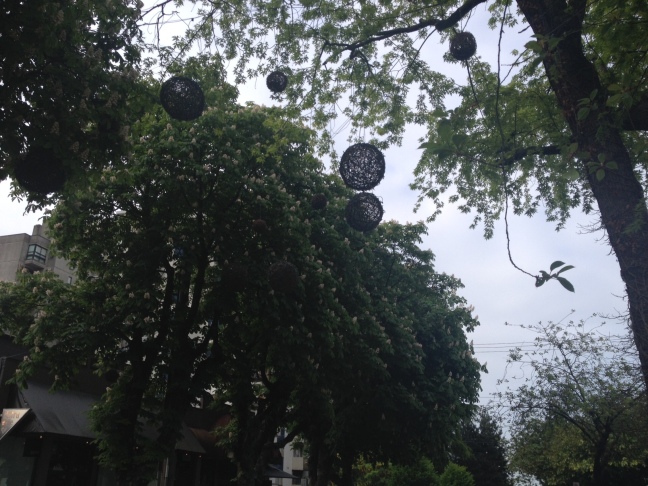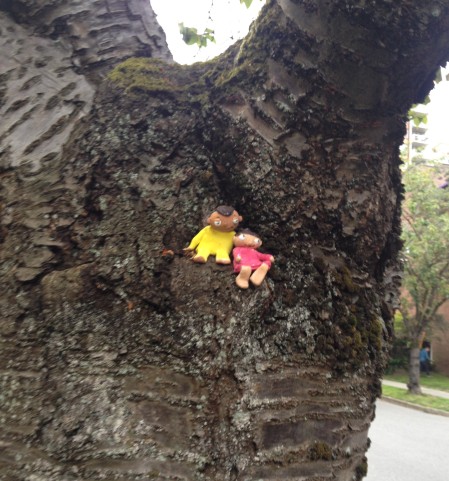We’ve seen much interesting information emerge from the 2016 Census so far, but the data I’ve been most eager for is still to be released – this Wednesday. Those statistics are on housing tenure – and more specifically, how many renters and homeowners exist in a given jurisdiction. I’m keen to see this data for the city overall, as well as for its individual neighbourhoods, which vary considerably in their percentages of renting households.
For sake of historical perspective, here is a table showing what the City of Vancouver’s tenure percentages have been, back to 1951. The source is a report prepared for the city in 2010 (by McClanaghan & Associates) as background for the city’s current housing and homelessness strategy (see pg. 24, Table 7). As is shown, the percentage of renting households in the City of Vancouver peaked in 1991 at 59 percent and has been slowly declining since then. Between the 1961 and 1966 censuses and again from 1966 to 1971, the percentage of tenant households took major leaps, increasing from 39 to 53 over that ten-year period. Tenant households have made up the majority of the city ever since then.
The decline in the percentage of tenant households since 1991 has happened despite various of what I view to be important and useful city policies aimed at retaining and increasing the amount of rental housing, such as the Rate of Change policy enacted in 2007 and more recently, incentive programs such as Rental 100. It’s notable that a similar decline has taken place at the regional level, with the percentage of renting households declining from 44 percent in 1986 to 35 percent in 2011.[1]
Percentage of owner and renter households in the City of Vancouver, 1951-2011[2] [3]
| Year | Owning HH | Rental HH |
| 1951 | 63.0% | 37.0% |
| 1961 | 60.8% | 39.2% |
| 1966 | 52.2% | 47.8% |
| 1971 | 46.9% | 53.1% |
| 1976 | 46.5% | 53.5% |
| 1981 | 44.9% | 55.1% |
| 1986 | 42.3% | 57.7% |
| 1991 | 40.8% | 59.2% |
| 1996 | 41.9% | 58.1% |
| 2001 | 43.8% | 56.2% |
| 2006 | 48.1% | 51.9% |
| 2011 | 48.6% | 51.4% |
| 2016 | ? | ? |
Possible reasons for the changes in the percentage of renting households
I believe the most significant factors in this decline are the nearly complete lack of new, long-term, secure rental housing that was built in the city between the (approximately) late 1980s and early 2010s, as well as the conversions of apartment buildings to condominiums that took place from the 1970s and into the 1990s (and which are generally no longer allowed).
However, especially if interest rates are low and the economy is doing well, the decrease in the percentage of renting households could also result from existing tenants becoming homeowners. Depending on your values and views on home ownership, you might see a tenure shift stemming from those factors to be positive – for the tenants and for society overall.
While no doubt many Vancouver tenants have happily become homeowners since 1991, given what we know about current incomes of tenants and the current cost of housing in relation to local incomes, I believe the decline in the percentage of renter households is a serious problem – enough so that while these conditions continue, I’d like to see governments (at each level) try to halt this trend.
Why does this matter?
Our current combination of circumstances – i.e. high housing costs in relation to local incomes, very low rental vacancy rates and the declining percentage of renter households – strongly suggests that people who can’t afford to buy homes are finding it more and more difficult to stay in or move to the City of Vancouver, and therefore that people with lower incomes (who tend to be renters) are gradually losing access to the public goods (e.g. libraries, parks and cultural and recreational events) that a city such as Vancouver has to offer. Vancouver and cities like it provide economic and cultural opportunities – for jobs, for starting businesses and building skills, and for finding like-minded others – not available in smaller communities. Vancouver tenants forced out of the city due to lack of rental housing, or rental housing that’s affordable to them, also lose whatever community connections they’ve built up over the time they’ve lived here. If we care about equity, I believe it should be a policy goal to ensure that renters continue to have ample access to these high-quality opportunities and public goods. Simply residing in a vibrant, diverse and culturally rich urban environment should not be a luxury, but declining access to rental housing puts us on this trajectory.
Another consideration is that renters are vital to the functioning of the city’s economy. If we don’t halt this trend and make more room for renters, we’ll continue to see stories about the difficulties local businesses are having with finding and keeping workers – in some cases even having to cut back on hours of service or curtail expansion plans. Wages are obviously a big part of this equation too, but one way or the other, people who can’t afford to buy a home need to be able to rent one within reasonable commuting distance of their work, or they won’t be able to participate in the economy (and many other equally important activities).
Side note: 1921 was the first time housing tenure data was collected in the Canadian national census. So, any housing tenure data you run across from before then must be from other (perhaps less reliable) sources.
[1] Metro Vancouver, “2006 Census Bulletin: Dwellings by Type and Tenure,” December 2007, http://www.metrovancouver.org/services/regional-planning/PlanningPublications/2006census_dwell_Dec2007.pdf. Page 2, Table 4. See also note 2 re: 2011 National Household Survey data.
[2] This table draws from the 2011 National Household Survey (NHS) because the 2011 Census did not include a question on tenure status. Statistics Canada has cautioned that due to differences in data collection methods between the census and the voluntary NHS, the two types of data may not be directly comparable. So a cautionary note there.
[3] Dale McClanaghan, “City of Vancouver Rental Housing Strategy Research and Policy Development Synthesis Report,” August 2010, http://vancouver.ca/docs/policy/housing-rental-housing-strategy-synthesis.pdf. p.24, Table 7. Also, Statistics Canada, “NHS Profile, Vancouver, CY, British Columbia, 2011.”

![IMG_3451[1] IMG_3451[1]](https://karensawa.files.wordpress.com/2015/05/img_34511-e1431661877369.jpg?w=176&resize=176%2C172&h=172#038;h=172)
![IMG_3452[1] IMG_3452[1]](https://karensawa.files.wordpress.com/2015/05/img_34521-e1431662250695.jpg?w=176&resize=176%2C172&h=172#038;h=172)


![IMG_3453[1] IMG_3453[1]](https://karensawa.files.wordpress.com/2015/05/img_34531.jpg?w=212&resize=212%2C159&h=159#038;h=159)

![IMG_3462[1]](https://karensawa.files.wordpress.com/2015/05/img_34621.jpg?w=648&h=486)











